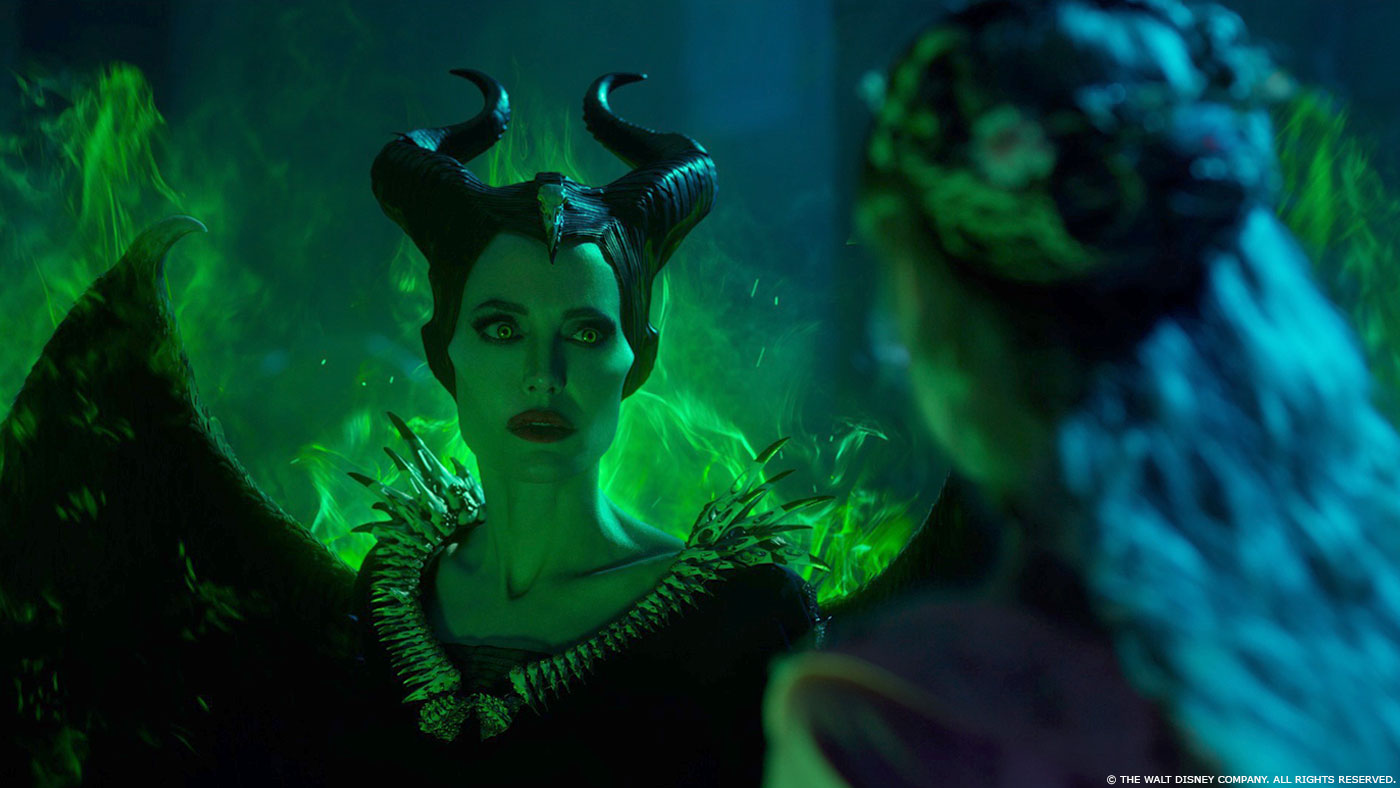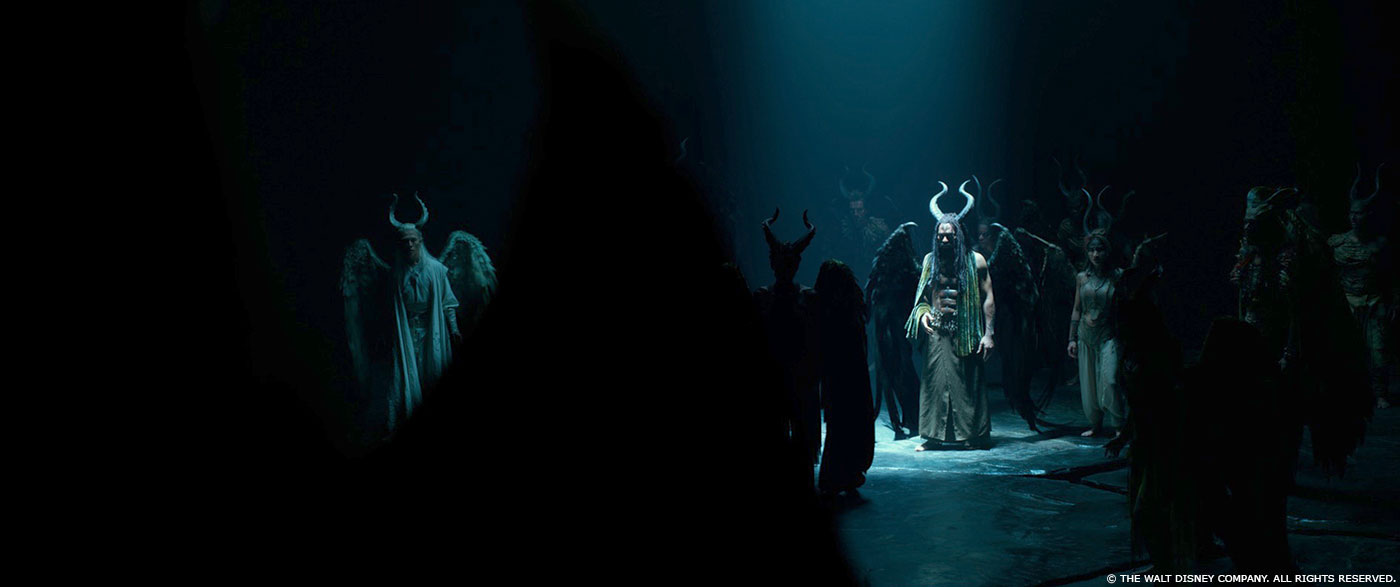In 2017, Jessica Norman explained the work of MPC on WONDER WOMAN. She talks to us today about her work on MALEFICENT: MISTRESS OF EVIL.
How was the collaboration with director Joachim Rønning and Overall VFX Supervisor Gary Brozenich?
It was great to work with Gary. We had daily reviews and catch ups. The director had a clear vision for the movie and came to MPC Film for regular reviews.
What were their expectations and approach about the visual effects?
The main inspiration and direction came from the 2014 MALEFICENT movie. The brief was to create a world that everyone would recognize, but at the same time try to advance the look of creatures and environments.
How did you organize the work with your VFX Producer?
The work was split between London, Montreal, Vancouver and Bangalore. Each site had its own VFX Supervisor. Damien Stumpf in Montreal, Bryan Litson and Ferran Domenech in Vancouver and Laurent Gillet at Mill Film Montreal. I worked most closely with London Producer Thandiwe Philips, but also had regular catch ups with production and supervisors from the other sites.
Can you tell us more about the previs and postvis process?
Previs and postvis were looked after by production, and they did a great job. It really helped us to get a head start in the various builds and shot setups.
Where were various parts of the show filmed?
Pinewood Studios, with a few days of location shoots around London.
Can you elaborate on your Maleficent character work?
We did a full digi double character build for Maleficent, with various costumes that were used for CG take over and wide shots. We added CG wings to all Maleficent shots.
What were the main technical changes for this character from the first movie?
There were a lot more shots that needed wings compared to the first movie, where the character loses her wings relatively early on.
In the drama shots, it was important that the wings connected with the characters emotions. For the flying shots, we paid extra attention to the overall wing movement, the feathers and how they connected to the character and made her fly.
Can you tell us more about the creation and animation of the wings?
We used a lot of real life wing structure and anatomy reference material to build a believable set of wings that fold and move in a realistic way. The design was based on the wings from the first movie and concept artwork.
How did you create the feathers?
The feathers were created using MPC’s proprietary tool Furtility and a hair shader that gave them the silky anisotropic look.
How did you handle the challenge of the flying shots of Maleficent?
The actress and the other fey characters were filmed whilst attached to operated tuning fork rigs, on a blue screen stage. In some shots, we attached CG wings; some shots are full or partial CG takeovers. Additional overall movement was added to the characters in animation with tweaks from compositing.
Maleficent is using magic. How did you create and animate those FX elements?
Once again, the main inspiration was from the first movie. For the green magic that comes from Maleficent, we looked at how we could keep the iconic look and at the same time connect it more to the character. We emitted magic from between the feathers in her wings that travelled down to the ground and then came up around her.
Can you tell us more about the eye work for Maleficent?
The eye work for Maleficent was done in comp. We used a combination of mattes that were animated to give movement and light change
Many creatures appear during the show. How did you work with the art department to create them?
We received concepts for all the characters from the art department. Our Asset Supervisor Anelia Asparuhova worked closely with the asset team to build them all.
Can you explain in detail about their creation?
To achieve an organic and realistic look for all the faerie folk, we used a lot of real life reference. We looked at different types of mushrooms, fish, trees and frogs to name a few. The dark fey were separated in 4 different biomes – for the desert fey we based the look on eagles and condors. The jungle fey were based on different types of parrots. For the tundra fey we looked at owls and for the forest fey we looked at various dark feathered birds like crows and starlings. Each biome had a different shaped wing to suit their environment, for example the desert biome wings are wider then the rest, suitable for soaring while the jungle wings were a bit smaller, built to fly between the trees. We used Disney’s Anyma facial capture for the Pixies.
How did you handle their rigging and animation?
The animation and rigging was complex as there were so many different types of characters with different behaviours. We looked at a range of different reference material. Rigging worked closely with animation to make sure that we had all the right controls.
Can you tell us more about the crowd animation?
We used crowd for fairies, humans and fey characters. We shot mocap for the various scenes and characters. In the opening of the movie, we see all the leaves flying off a tree as prince Philip proposes to Aurora. The leaves are actually garland faeries done with our crowd tools.
The movie is full of exotic locations. What kind of references did you receive for them?
Apart from looking at reference from the first movie we looked at a lot of photography from Vietnam and China.
Can you explain in detail about the environment creation?
We built a lot of different environments for the movie. Aurora’s castle is in the centre of the moors. The lower parts of the castle and close surrounding garden were built on set at Pinewood studios. The castle has a CG extension and the garden was placed in an exotic CG landscape with tall mountains and lots of water.
For the centre of Ulstead, where the humans live, we built a castle taller than the Eiffel Tower. A modular section of the garden was created on the back lot at Pinewood studios. Various action was filmed here and then inserted into the larger CG build of Ulstead.
Mill Film built the exterior of Fey island, and some the chambers and rooms where Maleficent first meets the Fey. MPC Vancouver built the centre sections of the island where the different biomes live.
Which was the most complicated to create?
All the environments were complex. The title sequence was a particularly challenging shot. We start by the castle from the first movie. We fly by the moors, circle Ulstead and then fly back to the moors where we go into a macro close up with the tiny dew faeries. The shot ends with the pixies flying towards Auroras castle. The shot is over 3500 frames long. We split the shot in 10 parts that were later assembled.
Which sequence or shot was the most challenging?
The variety of work was challenging, but also made it fun to work on the movie.
What is your favorite shot or sequence?
There is a 360 shot that starts on the phoenix and ends on Maleficent. Not a very big impressive CG shot, but I really liked it as a shot from the first time when I saw it in a temp screening.
What is your best memory on this show?
The team was great and we had a lot of fun. I am happy that I got to meet and work with the compositing team in Bangalore towards the end of the show.
How long have you worked on this show?
Roughly 1.5 years.
What’s the VFX shot count?
2167.
What was the size of your team?
As with most projects, the team size varied through the project, and peaked at 1050.
A big thanks for your time.
WANT TO KNOW MORE?
MPC: Dedicated page about MALEFICENT: MISTRESS OF EVIL on MPC website.
© Vincent Frei – The Art of VFX – 2019














